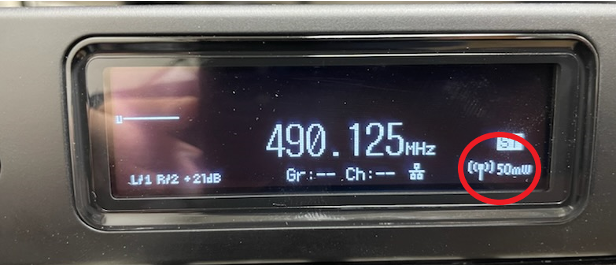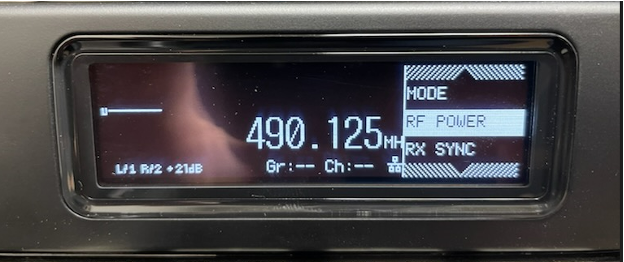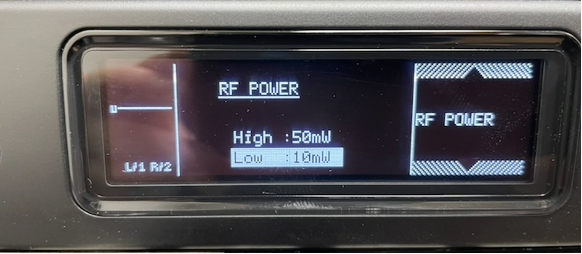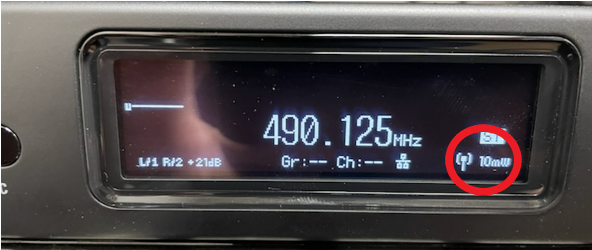Question: When should I adjust the RF power setting on the 3000 Series IEM system?
Answer: The 3000 Series IEM system has an adjustable RF power setting that allows you to switch between 50 mW and 10 mW of output. In this article, we will demonstrate how to adjust this setting on the ATW-T3205 transmitter and will discuss when to use the high or low RF power output setting.
When initially powered on, the ATW-T3205 will be set to 50 mW (high power) as indicated in the bottom right corner of the display screen.

To open the main menu, press the control dial.

Once opened, turn the control dial until RF POWER is highlighted.

Press the control dial to enter this setting. Here you will be able to select the 50 mW or 10 mW option for RF power output. Highlight the desired output setting, then press the control dial again to select it.

Once selected, press the BACK button on the front of the ATW-T3205 transmitter, and the new RF power output setting will now show in the bottom right.

While high power (50 mW) will provide better stability when only a few systems are being used, there is a general misconception that higher power is always better. As the number of systems in use increases, the amount of intermodulation distortion and the noise floor will also increase. To combat this, you may want to try lowering the RF power output of less important transmitters to 10 mW, which is more than enough power to efficiently work with the correct antenna placement.
For example, if there is a five-piece band on a stage that is roughly 20 feet deep, it would be beneficial to lower four of the transmitters to low power while leaving the drummer’s transmitter set to high power. This can ensure that the drummer will have a stable signal even though they may be the furthest away from the transmitters.
While this example is on a smaller scale, it is important to keep in mind that the more transmitters you switch to high power the higher the noise floor will become. If the noise floor gets too high, then the signal of the lower output transmitters may get buried in noise.
When designing or setting up your Audio-Technica systems you will always want to make sure you are selecting stable frequencies and are coordinating your IEM and microphone wireless system efficiently.
If you have additional questions regarding the 3000 Series IEM system, please contact the Audio Solutions Team for further assistance.
















































































































































.webp)































